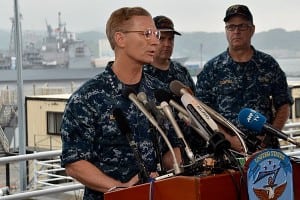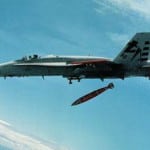
The Defense Department relieved Vice Adm. Joseph Aucoin, commander of the Seventh Fleet, in the wake of two Arleigh Burke-class destroyers colliding with commercial vessels this summer.The Navy announced in a brief statement that Aucoin was relieved by Adm. Scott Swift, commander of U.S. Pacific Fleet, “due to a loss of confidence in his ability to command.”Two DDGs in the Pacific theater collided with commercial vessels within three months this summer. First, the USS Fitzgerald (DDG-62) collided with a merchant…

 By
By 











